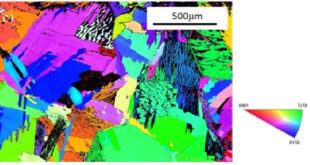Significance
Presently, many studies have reported on the intriguing properties of nanofibers. Consequently, focus has shifted towards developing an excellent production technique. As of now, electrospinning stands out among various techniques available, not only because it is straightforward, but also for being a versatile fiber production method. However, further expansion of applications based on electrospinning require precision patterning of fibers regardless of the size and complexity of the pattern, in which locating the fiber at a desired point is critical.
Unfortunately, far-field electrospinning (FFES) which can be executed by a few tens of kilovolts have a random deposition manner because of the bending instability. As such, alternative variations have been explored, with the most recent one involving application of melt electrospinning; a process in which slower jet speed is used to develop more complicated patterns than grid patterns. Unfortunately, reports have established that in melt electrospinning, the fiber diameters mostly range within microns, thereby leading to limitations towards applications in nanoscale.
Recently, Prof Jiyoung Chang and his research team from the Department of Mechanical Engineering at University of Utah identified new ways of slowing the jet speed. In particular, they explored the effect of process parameters on the jet speed by controlling them during a continuous near-field electrospinning (NFES) process in order to find the effective way to reduce the jet speed. Their work is currently published in Journal of Manufacturing Processes.
Foremost, the process parameters such as applied voltage, tip-to-collector distance (TTCD), and an electric field were experimentally explored in a bid to establish an understanding of their effects on the jet impact speed. Various characterization procedures using scanning electron microscopy were then used to obtain optical images of the tested electrospun fiber. Moreover, to realize the jet impact speed for precise microscale patterning, experimental study of the effect of the process parameters, such as applied voltage, TTCD, and an electric field were performed.
By comparing the jet impact speed under changing the parameters during a continuous process, the researchers realized that the applied voltage had the most dominant impact on reducing the jet impact speed in NFES. Additionally, in order to keep the electrospinning process continuous, it was seen necessary to lower the applied voltage. Different patterning manners were also identified depending on the relationship between the jet impact speed and the collector; following which, jet impact speed of as small as 5 mm/s was achieved, and the precise microscale patterns were successfully demonstrated.
In summary, University of Utah engineers demonstrated the precise microscale patterning of beadless and uniform nanofiber using direct-write NFES. Most important, it was reported that by lowering the applied voltage and the TTCD simultaneously, one could reduce the jet impact speed while keeping the process stable and continuous, resulting in considerable improvement of the accuracy of the deposition. Altogether, the patterning technique presented here is expected to unlock the potential of its utilization on fiber-based electronic devices, optics and tissue engineering.

Reference
Dongwoon Shin, Jonghyun Kim, Jiyoung Chang. Experimental study on jet impact speed in near-field electrospinning for precise patterning of nanofiber. Journal of Manufacturing Processes, volume 36 (2018) page 231–237.
Go To Journal of Manufacturing Processes Advances in Engineering Advances in Engineering features breaking research judged by Advances in Engineering advisory team to be of key importance in the Engineering field. Papers are selected from over 10,000 published each week from most peer reviewed journals.
Advances in Engineering Advances in Engineering features breaking research judged by Advances in Engineering advisory team to be of key importance in the Engineering field. Papers are selected from over 10,000 published each week from most peer reviewed journals.




